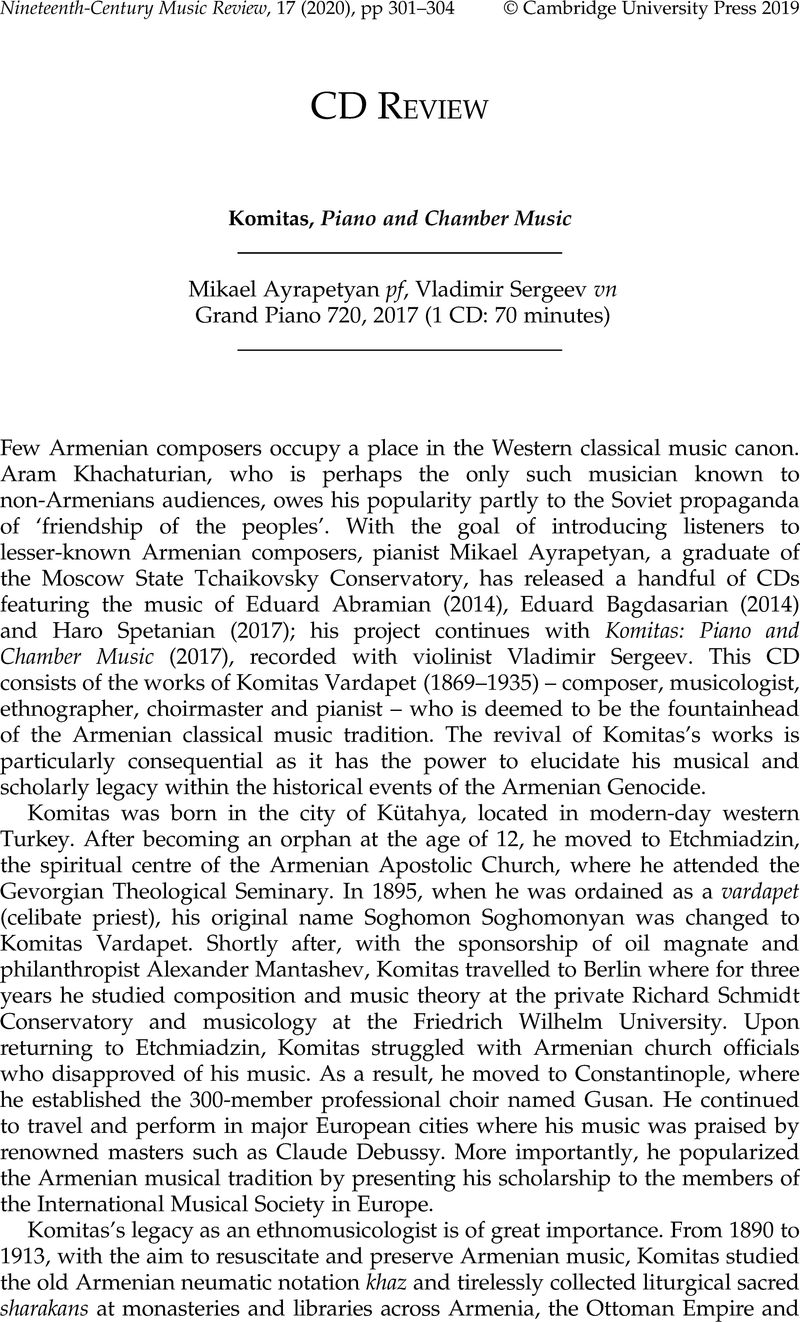No CrossRef data available.
Published online by Cambridge University Press: 30 May 2019

1 Holslag, Anthonie, The Transgressional Consequences of the Armenian Genocide: Near the Foot of Mount Ararat (Cham: Springer International, 2018), 188Google Scholar.
2 Eddie Arnavoudian, ‘The Salvaging of an Authentic Armenian Musical Tradition’, 21 April 2003, on Armenian News Network / Groong, http://groong.usc.edu/tcc/tcc-20030421.html (accessed 16 April 2019).
3 Arnavoudian, ‘The Salvaging of an Authentic Armenian Musical Tradition’.
4 Holslag, The Transgressional Consequences, 190.
5 Poladian, Sirvart, “Komitas Vardapet and His Contribution to Ethnomusicology: Komitas the Pioneer”, Ethnomusicology 16/1 (1972): 84CrossRefGoogle Scholar.
6 According to the CD liner notes, the Seven Folk Dances were written and performed in Paris in 1916. Yet 1916 is a highly unlikely date for this composition, as many scholars identify 1915 as the year after which Komitas ‘never picked up a pen again’ (Holslag, Transgressional Consequences, 189). The cycle most likely dates to 1906, when Komitas travelled to Pairs to give concerts and lectures.